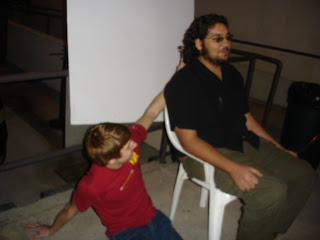ATMOSPHERIC Effects Class Meeting 3
Atmospheric Effects
Fog, clouds, smoke, rain, mist, hail, lightning, storms. Snow, falling, set dressing and as used for miniatures. Frost & Ice Wind, blizzards, dust and cobb webs, wet & dry. Dry ice generators, Water in the studio.
The smoke gun. Lava, Quicksand and swamps.
Some atmospheric effects involve pyrotechnic devices that require you to have a licensed pyro technician on set. Check with the California State Fire Marshal prior to scheduling effects that involve pyrotechnics.


 This small confined fire patch is placed around a scene to simulate a much larger fire involvement. Requires a
This small confined fire patch is placed around a scene to simulate a much larger fire involvement. Requires a  Aluminum filings ignited with lp gas create bright flashes. Used by major studios this effects device presents a danger if not operated by licensed pyro technician.
Aluminum filings ignited with lp gas create bright flashes. Used by major studios this effects device presents a danger if not operated by licensed pyro technician.










